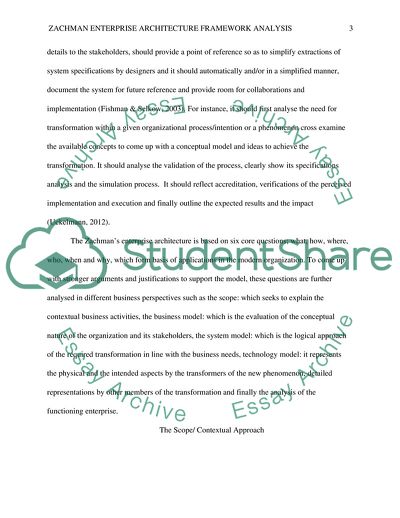Cite this document
(Zachman Enterprise Architecture Framework Analysis Essay Example | Topics and Well Written Essays - 1250 words, n.d.)
Zachman Enterprise Architecture Framework Analysis Essay Example | Topics and Well Written Essays - 1250 words. https://studentshare.org/architecture/1803225-zachman-enterprise-architecture-framework-analysis-article-review
Zachman Enterprise Architecture Framework Analysis Essay Example | Topics and Well Written Essays - 1250 words. https://studentshare.org/architecture/1803225-zachman-enterprise-architecture-framework-analysis-article-review
(Zachman Enterprise Architecture Framework Analysis Essay Example | Topics and Well Written Essays - 1250 Words)
Zachman Enterprise Architecture Framework Analysis Essay Example | Topics and Well Written Essays - 1250 Words. https://studentshare.org/architecture/1803225-zachman-enterprise-architecture-framework-analysis-article-review.
Zachman Enterprise Architecture Framework Analysis Essay Example | Topics and Well Written Essays - 1250 Words. https://studentshare.org/architecture/1803225-zachman-enterprise-architecture-framework-analysis-article-review.
“Zachman Enterprise Architecture Framework Analysis Essay Example | Topics and Well Written Essays - 1250 Words”. https://studentshare.org/architecture/1803225-zachman-enterprise-architecture-framework-analysis-article-review.


